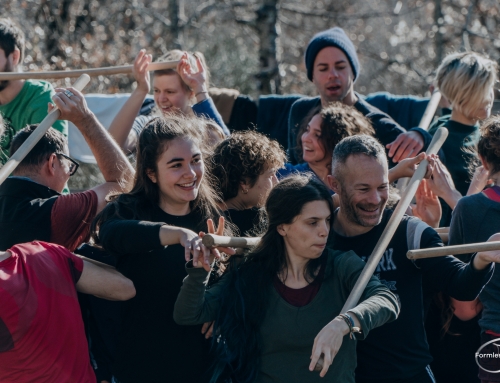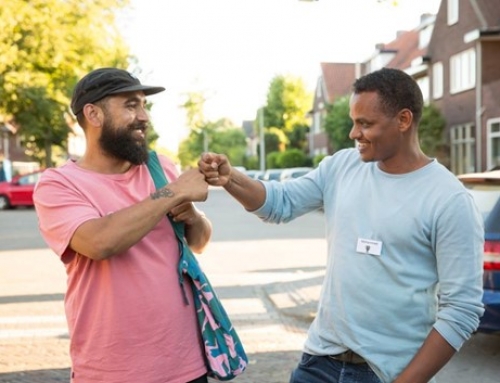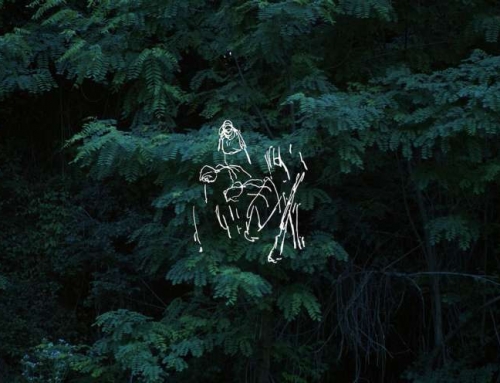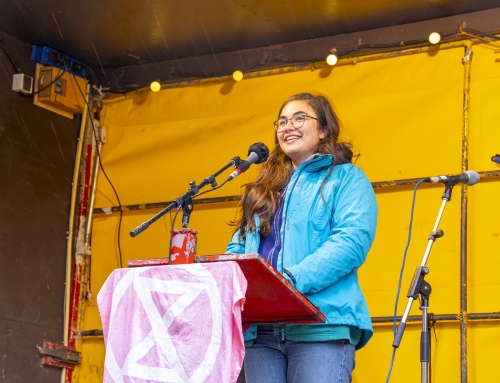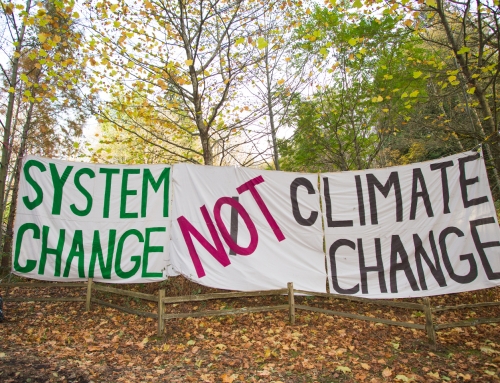My story began two years ago when I was navigating my way through the Personal Expedition. The Personal Expedition is a 14-week course where we, social innovators, research societal challenges that personally interest us. Inclusion, discrimination and inequalities have been societal challenges to which I felt the most drawn. These challenges are linked to human behaviour and understanding different perspectives. As I mentioned in my previous blog, Dave Grey’s “Liminal Thinking” theory talks about how our past experiences influence these behavioural patterns and how our behavioural patterns influence the way we treat others. (Gray, 2018).
In my personal expedition, I realised that people with different ethnic backgrounds often face financial problems due to historical events. As I stated in my previous blog, situations, where people face discrimination in the labour market, can stem from old racist thinking patterns. In the Netherlands, there are links between “achterstandswijken” (deprived neighbourhoods), poverty and discrimination. These neighbourhoods lack a quality education, which leads to children from these areas facing disadvantages when building their careers compared to children in other neighbourhoods.
Examples like these motivated me to research poverty and its link to inclusion. My professional expedition (a continuation course of the personal expedition) was focused on income inequality and how capitalism relates to this societal issue. From this research, I found “Quiet Communities”, which is where I did my internship in Den Bosch(more about my internship can be found here: https://www.performatory.nl/the-helpful-city-of-den-bosch-over-the-years/. Here I was able to learn first-hand what poverty does to people and what it is like to live in a rich country, like The Netherlands, financially troubled. I learned from Quiet members how excluding it can be to live in a well-off society while not experiencing the same opportunities as the rest.
I realise now that there is still more to learn. There is an overarching connection between behavioural patterns like inclusion / exclusion and other societal challenges like the climate crisis. For example, the rain forests in the Amazon are habituated by numerous Indigenous tribes. The Global North is defined as such: “…the rich and powerful regions such as North America, Europe, and Australia.” (Braff & Nelson, nd.) continues to take resources from the Amazon which not only hurts nature in this area but the Indigenous people as well. However, they have no say in this process and are excluded. To face these societal challenges of inequality, I want to understand how strong this connection between climate justice and social justice is. How are people affected by the climate crisis? How are groups, like the BIPOC, LGBTQ+, disabled and financially disadvantaged (for example, the Quiet members) affected by the climate crisis? How are their experiences different compared to others?
THE CHALLENGE
To find my answers to these questions, I have teamed up with Climate Streamers for my graduation assignment. In this collaboration, I can bring them closer to a diverse target group and bridge the gap between climate justice and social justice. In addition, I will research how inclusive Climate Streamers is in their identity and how they can organise an event that promotes diversity in the climate movement. My goal with this project is to truly become an expert on the topic of inclusivity and practise what I preach. Inclusion is nothing without co-creation or interaction, so I want to work towards an innovative and interactive product by the end of this process!
BUT, WHO ARE CLIMATE STREAMERS?
Climate Streamers was founded on 10 December 2021 by two social innovation students, Isabella Forchini and Alexandra Jahnke. They are a non-profit organisation focusing on climate change. What sets Climate Streamers apart is their appreciative approach to initiating positive change for the sake of the climate. They take this approach to use creativity, leisure and events elements to appreciate the actions in climate activism that is present now rather than lecturing people about what is wrong. With their unique outlook, they believe they can make the biggest impact for the sake of our planet and its people.
You can find more about Climate Streamers here: www.climatestreamers.nl and: www.instagram.com/climatestreamers
THE (INCLUSIVE) CLIMATE MOVEMENT
The environmental movement is nothing new. As a response to the Industrial Revolution in the 19th and early 20th centuries, this movement was created to combat smoke pollution which was a result of industrialisation. The climate movement stems from this early activism and is expressed as protests and marches in the present. These protests, marches, and other ways of activism demanded the government to change its policies which could ultimately endanger the environment. Technological developments and profit-making stimulate bigger companies (like Shell) to make use of Earth’s resources and profit from exploiting these materials. In addition, this process is often not done ethically. Taking advantage of Indigenous lands for materials and using people as slaves, the Global North has been able to develop itself while exploiting the Global South to the point of underdevelopment. Climate change not only affects us but especially those in these deprived countries. An example of a good initiative is the famous Tony Chocolonely chocolate bars, demanding fair treatment for cacao farmers in the Global South and promoting slave-free chocolate.
“Inclusive climate action means both reducing the effects of climate change on the most vulnerable and ensuring the benefits and burdens of climate action are equitably distributed. Climate action becomes inclusive by engaging a wide range of stakeholders, designing policies that are fair and accessible, and equitably distributing policy impacts.” (Jaglom & Pfeiffer, 2019).
Inclusive climate action addresses different issues that relate to each other. It is a solution to climate change and socio-economic inequality. Inclusive climate action takes different forms at different levels, from international platforms to national policies and local projects. The following image shows the different domains and benefits of an inclusive climate movement.

Figure 1. The interconnected dimensions and benefits of inclusive climate action. (RALI, 2019).
There are several ways to implement inclusivity in climate activism. Climate Links mentions the following points:
- “Consistently identify holistic solutions with multiple benefits that integrate social equity, economic opportunity, and climate considerations.
- Ensure participation of all stakeholders in consultation, planning and design.
- Search for opportunities to implement climate actions that directly benefit low-income, underrepresented, and vulnerable communities.
- Measure the impact of inclusive climate action and adjust as needed.
- Form partnerships amongst government, business and NGOs.”
(Jaglom & Pfeiffer, 2019).
These methods are not universal but are still very helpful to consider for organisations taking climate action. A best practice this website mentions is the “Resources to Advance LEDS implementation” (RALI) project. Here the previously mentioned bullet points were implemented in decision making, which helped developing countries speed the transition to climate-resilient and sustainable economic growth.
In addition, there is another best practice that is not completely related to sustainability but inclusivity in organisations. “Studio I” is an initiative of the Stedelijk Museum Amsterdam and the Van Abbemuseum in Eindhoven. It’s a platform that stimulates inclusivity in culture and aims to make the culture sector as accessible as possible. Studio I offers guidance to other cultural institutions in The Netherlands towards a more inclusive cultural sector. This project took place between 2017 and 2020. They have developed innovative programmes for those who don’t take a visit to a museum for granted.
To finalise, inclusion has different sides. An inclusive atmosphere can be anywhere in any organisation, from museums to international policymakers to something small like a local bakery. In the context of my graduation assignment, I am working with Climate Streamers who are focusing on climate activism in The Netherlands. They are aware of the importance of inclusion and climate activism and want to initiate inclusive climate action themselves. Understanding the intersectionality between climate activism and social justice is what leads to truly sustainable changes. Sustainable not only in terms of being good for nature but also initiating long-lasting positive changes overall.
“People who are socially, economically, culturally, politically, institutionally or otherwise marginalized are especially vulnerable to climate change and also to some adaptation and mitigation responses.” (United Nations, 2015).
References
Braff, L., & Nelson, K. (n.d.). Chapter 15: The Global North: Introducing the Region –
Gendered Lives. Pressbooks. Retrieved from
Jaglom, W., & Pfeiffer, L. (2019, October 22). How Can Climate Action Be Inclusive? Climatelinks. Retrieved from
https://www.climatelinks.org/blog/how-can-climate-action-be-inclusive
Miller, D. (19 February, 2018). Liminal Thinking. UXmatters. Retrieved from https://www.uxmatters.com/mt/archives/2018/02/liminal-thinking.php
OHCHR | Joint statement by UN Special Procedures on the occasion of World Environment Day (5 June 2015). (2015, June 5). OHCHR. Retrieved from
https://www.ohchr.org/en/NewsEvents/Pages/DisplayNews.aspx?NewsID=16049&LangID=E
USAID, Valenta, A., & van Pelt, M. (2018, September). Technical Support from the USAID RALI Project: Supporting the Transition to Sustainable Development. Retrieved from
https://ledsgp.org/app/uploads/2018/09/USAID-RALI-Support-Offerings-Summary_LEDSGP.pdf
– platform for inclusive culture. (2020, December 17). STUDIO i. Retrieved from

